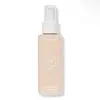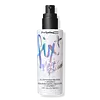What's inside
What's inside
 Key Ingredients
Key Ingredients

 Benefits
Benefits

 Concerns
Concerns

 Ingredients Side-by-side
Ingredients Side-by-side

Water
Skin ConditioningDimethicone
EmollientButylene Glycol
HumectantGlycerin
HumectantPropanediol
SolventPolysorbate 20
EmulsifyingCocos Nucifera Water
MaskingCocos Nucifera Fruit Juice
EmollientDimethiconol
EmollientPhenoxyethanol
PreservativeCaprylyl Glycol
EmollientLaureth-23
CleansingPotassium Sorbate
PreservativeAllantoin
Skin ConditioningLaureth-4
EmulsifyingHexylene Glycol
EmulsifyingSodium Hyaluronate
HumectantParfum
MaskingCI 16035
Cosmetic ColorantCI 19140
Cosmetic ColorantWater
Skin ConditioningButylene Glycol
HumectantGlycerin
HumectantPolysorbate 20
EmulsifyingTocopheryl Acetate
AntioxidantSodium Hyaluronate
HumectantArginine
MaskingCaffeine
Skin ConditioningAspergillus Ferment
Skin ConditioningRosa Rubiginosa Seed Oil
EmollientPorphyra Yezoensis Extract
Skin ConditioningGentiana Lutea Root Extract
Skin ConditioningPalmaria Palmata Extract
Skin ProtectingAlgae Extract
EmollientYeast Extract
Skin ConditioningHydrolyzed Rice Bran Extract
Skin ConditioningDipotassium Glycyrrhizate
HumectantSodium Polyaspartate
HumectantSilk Powder
Skin ConditioningPhospholipids
Skin ConditioningAscorbyl Glucoside
AntioxidantSalicylic Acid
MaskingTrehalose
HumectantTourmaline
Jojoba Wax PEG-120 Esters
Potassium Hydroxide
BufferingCaprylyl Glycol
EmollientHexylene Glycol
EmulsifyingPentylene Glycol
Skin ConditioningCitric Acid
BufferingHydroxyethyl Urea
HumectantParfum
MaskingLimonene
PerfumingBHT
AntioxidantDisodium EDTA
Sodium Citrate
BufferingPhenoxyethanol
PreservativePotassium Sorbate
PreservativeChlorphenesin
AntimicrobialSodium Benzoate
MaskingWater, Butylene Glycol, Glycerin, Polysorbate 20, Tocopheryl Acetate, Sodium Hyaluronate, Arginine, Caffeine, Aspergillus Ferment, Rosa Rubiginosa Seed Oil, Porphyra Yezoensis Extract, Gentiana Lutea Root Extract, Palmaria Palmata Extract, Algae Extract, Yeast Extract, Hydrolyzed Rice Bran Extract, Dipotassium Glycyrrhizate, Sodium Polyaspartate, Silk Powder, Phospholipids, Ascorbyl Glucoside, Salicylic Acid, Trehalose, Tourmaline, Jojoba Wax PEG-120 Esters, Potassium Hydroxide, Caprylyl Glycol, Hexylene Glycol, Pentylene Glycol, Citric Acid, Hydroxyethyl Urea, Parfum, Limonene, BHT, Disodium EDTA, Sodium Citrate, Phenoxyethanol, Potassium Sorbate, Chlorphenesin, Sodium Benzoate
Ingredients Explained
These ingredients are found in both products.
Ingredients higher up in an ingredient list are typically present in a larger amount.
Butylene Glycol (or BG) is used within cosmetic products for a few different reasons:
Overall, Butylene Glycol is a safe and well-rounded ingredient that works well with other ingredients.
Though this ingredient works well with most skin types, some people with sensitive skin may experience a reaction such as allergic rashes, closed comedones, or itchiness.
Learn more about Butylene GlycolCaprylyl Glycol is a humectant and emollient, meaning it attracts and preserves moisture.
It is a common ingredient in many products, especially those designed to hydrate skin. The primary benefits are retaining moisture, skin softening, and promoting a healthy skin barrier.
Though Caprylyl Glycol is an alcohol derived from fatty acids, it is not the kind that can dry out skin.
This ingredient is also used as a preservative to extend the life of products. It has slight antimicrobial properties.
Learn more about Caprylyl GlycolGlycerin is already naturally found in your skin. It helps moisturize and protect your skin.
A study from 2016 found glycerin to be more effective as a humectant than AHAs and hyaluronic acid.
As a humectant, it helps the skin stay hydrated by pulling moisture to your skin. The low molecular weight of glycerin allows it to pull moisture into the deeper layers of your skin.
Hydrated skin improves your skin barrier; Your skin barrier helps protect against irritants and bacteria.
Glycerin has also been found to have antimicrobial and antiviral properties. Due to these properties, glycerin is often used in wound and burn treatments.
In cosmetics, glycerin is usually derived from plants such as soybean or palm. However, it can also be sourced from animals, such as tallow or animal fat.
This ingredient is organic, colorless, odorless, and non-toxic.
Glycerin is the name for this ingredient in American English. British English uses Glycerol/Glycerine.
Learn more about GlycerinHexylene Glycol is a surfactant. Glycols are a class of alcohols. Hexylene Glycol is a surfactant and emulsifier.
As a surfactant, Hexylene Glycol helps gather dirt and oil on your skin to be washed away.
As an emulsifier, Hexylene Glycol helps keep water and oil together. This prevents them from separating in a product. Hexylene Glycol also thins out the texture of a product by lessening viscosity.
Hexylene Glycol has a small molecular weight.
Learn more about Hexylene GlycolParfum is a catch-all term for an ingredient or more that is used to give a scent to products.
Also called "fragrance", this ingredient can be a blend of hundreds of chemicals or plant oils. This means every product with "fragrance" or "parfum" in the ingredients list is a different mixture.
For instance, Habanolide is a proprietary trade name for a specific aroma chemical. When used as a fragrance ingredient in cosmetics, most aroma chemicals fall under the broad labeling category of “FRAGRANCE” or “PARFUM” according to EU and US regulations.
The term 'parfum' or 'fragrance' is not regulated in many countries. In many cases, it is up to the brand to define this term.
For instance, many brands choose to label themselves as "fragrance-free" because they are not using synthetic fragrances. However, their products may still contain ingredients such as essential oils that are considered a fragrance by INCI standards.
One example is Calendula flower extract. Calendula is an essential oil that still imparts a scent or 'fragrance'.
Depending on the blend, the ingredients in the mixture can cause allergies and sensitivities on the skin. Some ingredients that are known EU allergens include linalool and citronellol.
Parfum can also be used to mask or cover an unpleasant scent.
The bottom line is: not all fragrances/parfum/ingredients are created equally. If you are worried about fragrances, we recommend taking a closer look at an ingredient. And of course, we always recommend speaking with a professional.
Learn more about ParfumPhenoxyethanol is a preservative that has germicide, antimicrobial, and aromatic properties. Studies show that phenoxyethanol can prevent microbial growth. By itself, it has a scent that is similar to that of a rose.
It's often used in formulations along with Caprylyl Glycol to preserve the shelf life of products.
Polysorbate 20 is made by combining ethoxylation of sorbitan, ethylene oxide, and lauric acid. It is a mild cleansing agent, surfactant, and emulsifier.
As a surfactant, it helps collect dirt and oils for washing. Emulsifiers prevent oils and water from separating.
Polysorbate 20 also adds scent to a product. Since it is made using sorbitol, it has a sweet scent. Sorbitol can also be found in fruits such as apples and peaches.
The lauric acid used to create Polysorbate 20 is often derived from coconuts.
Polysorbate 20 may not be fungal acne safe.
Learn more about Polysorbate 20Potassium Sorbate is a preservative used to prevent yeast and mold in products. It is commonly found in both cosmetic and food products.
This ingredient comes from potassium salt derived from sorbic acid. Sorbic acid is a natural antibiotic and effective against fungus.
Both potassium sorbate and sorbic acid can be found in baked goods, cheeses, dried meats, dried fruit, ice cream, pickles, wine, yogurt, and more.
You'll often find this ingredient used with other preservatives.
Learn more about Potassium SorbateSodium Hyaluronate is hyaluronic acid's salt form. It is commonly derived from the sodium salt of hyaluronic acid.
Like hyaluronic acid, it is great at holding water and acts as a humectant. This makes it a great skin hydrating ingredient.
Sodium Hyaluronate is naturally occurring in our bodies and is mostly found in eye fluid and joints.
These are some other common types of Hyaluronic Acid:
Learn more about Sodium HyaluronateWater. It's the most common cosmetic ingredient of all. You'll usually see it at the top of ingredient lists, meaning that it makes up the largest part of the product.
So why is it so popular? Water most often acts as a solvent - this means that it helps dissolve other ingredients into the formulation.
You'll also recognize water as that liquid we all need to stay alive. If you see this, drink a glass of water. Stay hydrated!
Learn more about Water